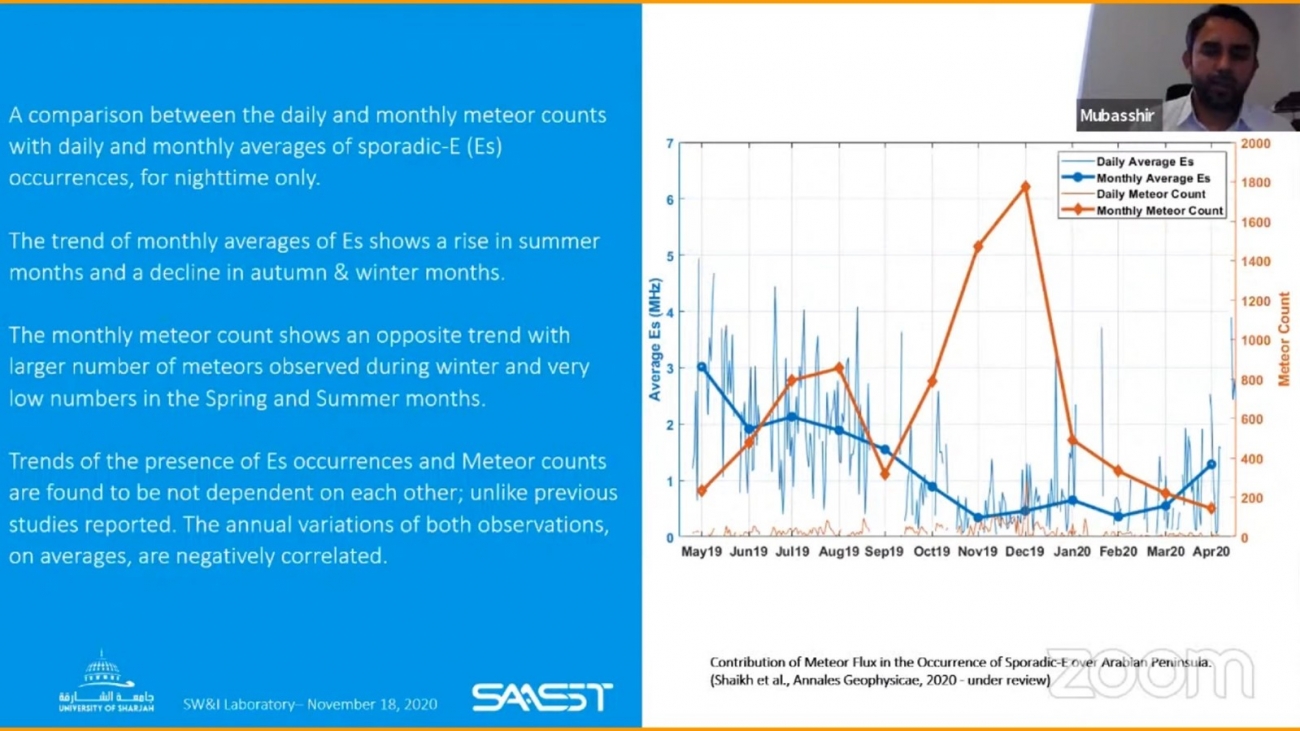As part of its Wednesday's lecture, the Sharjah Academy for Astronomy, Space Sciences, and Technology organized a special lecture on the academy "Space Weather and Ionospheric Laboratory." The lecture was given by Dr. Mubasshir Shaikh, the laboratory's principal supervisor. Dr. Mubasshir gave an overview of the main lab research themes and the main instruments. As he emphasized, Space Weather is becoming a primary concern for today's applications in space communication, Earth's environment, and the Sun’s sunspots predictions. All that happens on Earth is directly related to the Sun. This is why it is essential to know how the Sun’s solar wind affects our planet, and how it affects the ionosphere, the front layer of our atmosphere. Earth has seen so many geomagnetic storms, and the worst one happened in 1859, where a flash of light was seen on the Sun’s surface, followed days later by a response from Earth’s magnetic field resulting in the larget geoeffective solar storm ever recorded. Auroras as bright as day were observed in the Rocky Mountains, Panama / Caribbean Islands, and telegraphs (long conductors, subject to induced currents) caught fire and started to operate without batteries. Such a geomagnetic storm will be catastrophic today and will cost trillions of dollars as damages.
Dr. Mubasshir also described the laboratory's two major instruments: the GNSS station and the CADI Ionosonde. The GNSS station can measure and monitor GNSS signal quality. GNSS receiver technology relies on signals broadcast from satellites orbiting 20,000 km above the Earth at a frequency of approximately -163 dBW or about a single tree ornament bulb's strength. This makes GNSS signals susceptible to interference from many sources. The Canadian Advanced Digital Ionosonde (CADI) is a low cost, state-of-the-art, flexible, full-featured ionosonde ideal for routine ionospheric monitoring and research. CADI provides sounding capability using high-power radio frequency pulses at vertical incidence.



